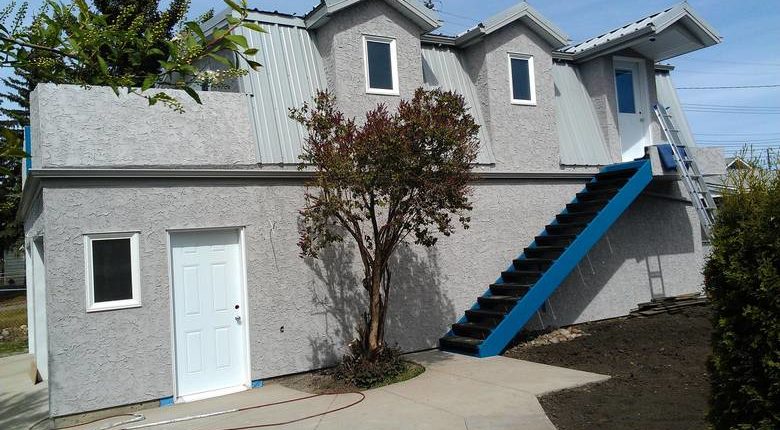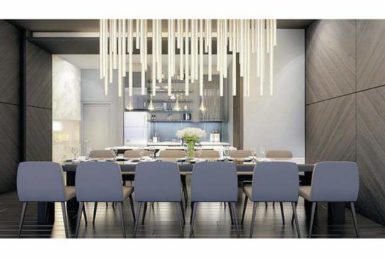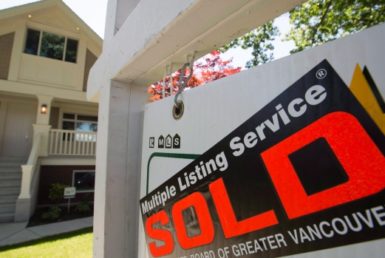Garage suites create ‘voluntary affordability’ in Edmonton

Garage suites create ‘voluntary affordability’ in Edmonton
Dave Soutar’s garage suite in Edmonton.
DAVE SOUTAR
Study shows nearly half of the city’s garage suites are rented to friends and family
A researcher at Dalhousie University, Halifax, has compiled the first comprehensive data set on garage suites in Edmonton as part of a thesis on social relationships and affordability of accessory dwelling units.
Her study, published last month, finds that nearly half (48 per cent) of all garage suites in Edmonton, currently being used as dwelling houses, are rented to family or friends.
“This type of infill development is much more relationship driven than financial,” Ashley Salvador says. “A large number of these suites have been built for the benefit of a family member or to allow the homeowners to age in place.”
Ms. Salvador undertook the research as part of her degree in Environment, Sustainability and Society.
She has since co-founded YEGarageSuites, where she runs workshops for the public to learn more about building a garage suite in Edmonton, from the permitting process to financing and energy efficiency.
The aim of her thesis was to explore a concept called voluntary affordability, whereby owners of accessory dwelling units charge low or no rent to tenants, creating a form of affordable housing.
She found that the average rent charged to family members is just $504 a month, compared to units rented to tenants previously unconnected to the owners which are rented at an average of $1,154 a month. In total, 25 per cent of garage suites in Edmonton are considered affordable (that is, dwelling units which rent for less than $700 a month).
“Voluntary affordability is real and it’s happening in Edmonton,” Ms. Salvador says, “but my research also found that it’s not really accessible for people in lower- to middle-income brackets, who arguably need it the most. More than 70 per cent of garage-suite owners in Edmonton have a household income greater than $100,000 so currently the affordability aspect of garage suites is benefiting quite a specific demographic.”
“I know the city is looking into changing the restrictions from discretionary use to permitted, which means neighbours will no longer be given the ability to appeal a project, but I think policy needs to go further…”
ASHLEY SALVADOR, RESEARCHER, DALHOUSIE UNIVERSITY
Ms. Salvador’s research identified 45 per cent of respondents having a household income of $150,000 or more and 27 per cent had an income of between $100,000 and $149,000. According to Edmonton’s 2016 municipal census, 33 per cent of households in the city earn above $100,000 annually.
“From a policy perspective, reducing the cost to build, the cost for permits and reducing the time from conception to completion would make it a more widespread housing type,” Ms. Salvador says. “I know the city is looking into changing the restrictions from discretionary use to permitted, which means neighbours will no longer be given the ability to appeal a project, but I think policy needs to go further to help homeowners in lower- to middle-income brackets, and their family members, to benefit from this as a form of affordable housing.”
But the growing interest from some homeowners has caused alarm from others. Many residents of Edmonton’s mature neighbourhoods have campaigned against what they consider to be a one-size-fits-all approach to density. More recently, there have been concerns that the city isn’t doing enough to service and enhance the back alleys which have now become residential spaces.
“In 2015, the city relaxed the rules around garage suites to allow almost anybody to build one,” Ms. Salvador explains. “That’s what makes it a really interesting field for study, particularly the social relationships which are driving the projects.”
“The desire to age in place and house aging parents is one clear driver,” she continues, “but another trend on the rise is parents housing adult children and that’s something that’s absolutely happening in Edmonton.”
Of those owners renting their garage suite to family, Ms. Salvador found that 55 per cent are renting to aging parents while 15 per cent are renting to adult children.
Brian and Laura Finley’s garage suite.
LAURA FINLEY
Brian and Laura Finley are among the 15 per cent. They completed their garage suite last month and Ms. Finley’s son Mackenzie, 25, will soon be moving into the property.
“Mackenzie has a mild disability so he’ll benefit from living in a supported environment,” Mr. Finley says. “The plan is that, further down the line, when we’re gone, he’ll be able to rent out the main house while continuing to live in the garage suite. That will provide him with any income he’ll need for the future.”
The Finley’s garage suite was a 10-month project in the backyard of their 1950’s home in Bellevue. It’s a 650 square-foot suite above their detached garage which has it’s own utilities including water and gas. It was designed to mirror the main residence in appearance and Mr. Finley says the final cost “will come in something under $200,000.”
Ms. Salvador’s research found the average cost to build a garage suite to be $145,185 and the average size to be 645 square-foot. Forty-five per cent of respondents said they financed the construction of their suite with cash savings and 36 per cent used a home equity line of credit.
Dave and Deborah Soutar, who recently built a garage suite at their Avonmore home, are also providing affordable housing for their daughter, Emma.
“My original intention was to build a new garage and take advantage of the new garage suite rules to generate some retirement income says Mr. Soutar says. “But in the midst of the project my daughter was injured in a boating accident while swimming in a lake in B.C.; her injury was severe and she was spent a long time in hospital before returning home to live with us. With therapy and a prosthetic leg, she’s recovered well and at the end of last year it occurred to me that she could move into the garage suite, which had recently been finished.”
Dave and Deborah Soutar’s garage suite provides affordable housing for their daughter, Emma.
DAVE SOUTAR
The retired carpenter built much of his 720-square-foot suite with his own hands, in addition to the double garage and shop beneath it.
Forty-two per cent of respondents in Ms. Salvador’s research said they completed some or all of the physical-labour construction on their garage suite themselves, while 44 per cent said they designed the suite.
Mr. Soutar enjoyed the process so much he’d like to build more garage suites.
“The cost to me to build the suite was about $160,000. I think I could supply and build a regular double garage with a second story suite for about $145,000, which would include design, engineering, permits and drawings,” he says.
Mr. Soutar says his garage suite has added significant value to his property.
Dave Soutar’s garage suite under construction.
DAVE SOUTAR
“Every spring the city sends a new property-tax assessment based on their market evaluation. My assessment for 2015 was just under $400,000, for 2016 it’s just under $800,000, so I assume the new building pretty well doubled the value of the property,” he says. “Pretty good considering it cost about half of that.”
But, he says, the real value in his garage suite comes from having his daughter live there.
“The garage suite has improved my property and increased it’s value but it’s also improved my life. When my daughter moved out of the family home, I cried,” he says. “Having her here makes me happy. She’s also happy because she gets to live in a home that’s better than what she could otherwise afford. Everybody benefits from this, it’s a great thing.”
SPECIAL TO THE GLOBE AND MAIL




Join The Discussion